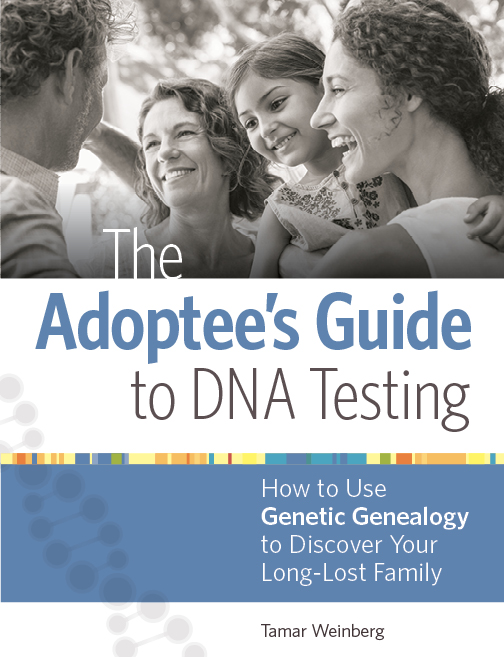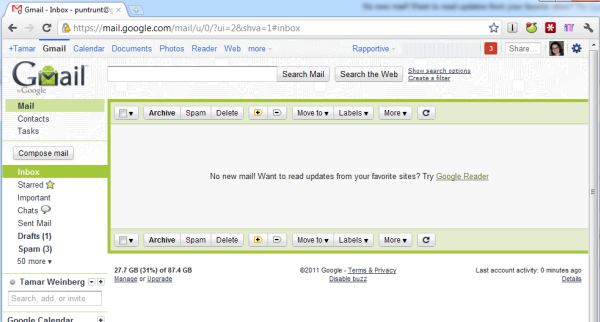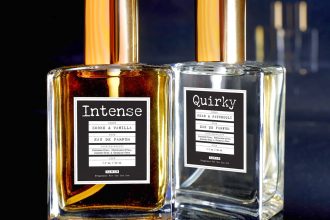
I haven’t been actively blogging in this space, but that’s not to say I haven’t been busy. Through the work I’ve been doing over the last few years, I’ve also grown passionate about a side pursuit and something I purely embrace simply to help others determine where they’ve come from. In August, my book The Adoptee’s Guide to DNA Testing: How to Use Genetic Genealogy to Discover Your Long-Lost Family was published. Not an adoptee? Don’t stop reading. Neither am I. Here’s the story of how all of this came to be — and why this book is relevant to you regardless of your background.
In 2014, I attended the South by Southwest Interactive Festival as I had done in previous years to connect with some of the most awesome minds in the industry. There, I attended one meaningful party that ended up effectively changing my life. Thanks to the awesome Kristi Wells, I connected with Ancestry’s staff and the rest has been history. At the event, I took a DNA test. I had no idea what the results would give me, but I’ve learned much since.
When my results came in a few weeks later, I didn’t recognize any names. At that point, even though the team at Ancestry had said these are true relatives, I had my doubts. I had thousands of fourth cousins and none of the names were familiar. This was what Ancestry said they encountered as well — “we ran the numbers again and they were accurate. These people were related,” I remembered them saying to us.
I hadn’t realized that a great chunk of the earliest testers on Ancestry beyond curious people like me had stories of unknown parentage. The first person who contacted me, Franceska, had a mother who was adopted. She said that both I and a cousin I actually knew were her closest matches. This, to me, seemed to indicate something, but I hadn’t been able to ascertain what. Later, after over a year of research, we’d find that my great great grandfather had a brother (also news to us) whose grandson had a very brief relationship with a nurse when he was in a hospital bed in World War II. That relationship resulted in a birth of a daughter, but the mother never told the father. The adoptees’ father, my cousin, died in 1985. His children never knew. Neither did the mother’s children, for that matter. My newly discovered cousin’s mother is still alive in her and is more than 90 years old, but vehemently denies the existence of this daughter (who unfortunately recently passed away) to this day.
This was the beginning of multiple journeys for me. Franceska was only one of dozens of people who had similar stories. I started working with a number of adoptees and others, quite a few who believed their fathers to be people who were not the fathers who raised them (and solved several of those mysteries within my own distant family). I learned that testing myself versus an older generation wasn’t wise; we only get 50% of our parents’ DNA, so if you want to find family, you want all that 100%. I got in the habit of testing my parents, grandparents, and even some distant relatives just to be able to figure out what DNA segments connected us and how I can use that data to connect to other distant family, adoptees or not, to determine how I am related to all of these listed matches on my Ancestry list. I began using every service, watched as sites popped up that helped users understand this data better, and encouraged people on different services to consolidate their data so that we can start analyzing it. Naturally, by testing anyone and everyone with some shared DNA, I was able to learn quite a lot about myself and help countless others.
I hadn’t realized how many people are facing similar challenges, be it that their birth parents are unknown or that they’re looking for family, but I actually wouldn’t mind sitting on the phone with someone for two hours explaining to them how to use a website, or getting some information from someone and then creating an instructional 25 minute YouTube video on what their findings meant. This showed me that there was a necessity for additional instruction on how to understand exactly what comes out of a DNA test.
So, like I’ve done in the past, I wrote a book. The Adoptee’s Guide to DNA Testing covers the science of genetic genealogy and then goes into detail about Ancestry, 23andMe, FamilyTreeDNA, and MyHeritage, the primary autosomal (you’ll learn what that means too) DNA testing sites. (For those of you who do in fact know what that means, don’t worry, mtDNA and Y-DNA are covered as well.) Then, it talks about some third party tools that enhance that experience to make DNA testing even more exciting.
Like the title says, the book has an adoptee skew (the publishers needed to define a market!), and I’ve certainly fielded the “are you adopted?” question many many times (the book shows you my results; I’m not), but everyone, and I mean everyone has a story like this in their family, even if they don’t know it yet. (Yes, Pandora’s box will be opened. It surprised me too, and I admittedly was very surprised when Franceska first reached out.) My mother-in-law has two first cousins (who knows, maybe there are more) that we discovered through genetic testing. It’s been fun and exciting to make these connections — since I have always been about relationships, I’m excited to discover these people and learn their stories. Minimally, I’m excited to learn about these new connections and find out exactly how we’re connected. It’s fun to create that exact association, especially when your genetic makeup makes that kind of difficult, thanks to a phenomenon known as endogamy (marriage within the tribe for generations upon generations. This topic is also covered in the book).
If you’ve been curious about DNA and have tested and don’t know what to make of the information, you need to read this book. If you want to find family, you need to read this book. If you are an adoptee or someone with unknown parentage or know someone who is and would like to help them, you need to read this book.
The bottom line: if you’re interested in genetic genealogy, the basic science behind it (I’m by no means a scientist and only got a 3 in AP Bio!), and want to do more with your data, you’ll get some extra info — but you need to read this book.
It’s been a trip to write; I hope it takes you on a trip to read and to later discover what your family genetics hold.



